When the 75-year-old George Chann held his solo exhibition, which proved to be his last, at a Los Angeles gallery in 1988, the local newspaper called him "a forgotten artist."
Indeed, Chann, the proprietor of Farmer's Market Art Gallery, who toiled a full eight hours every day at the easel in the back room of his shop for 40 years, hardly sold any work during his lifetime.
It was only after the Chinese ex-pat died in 1995 that his paintings slowly gained appreciation in the academic field and on the art market both here and abroad.
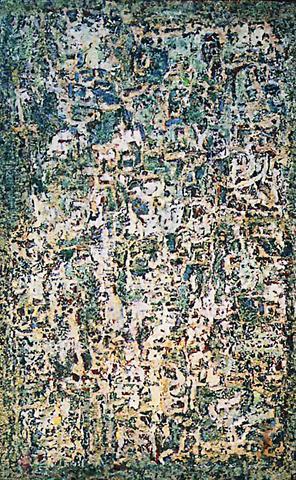
PHOTO COURTESY OF CITY GALLERY
After Chann's first posthumous exhibition, in Taipei in 2000, the life of the recluse began to unfold and his name started getting mentioned alongside those 20th century Chinese artists who were recognized much earlier, such as Sanyu (
In Chann's current exhibition, simply titled, "George Chann, Solo Exhibition" (
These Chinese calligraphy-incorporated abstract expressionist paintings are what Chann is most remembered for.
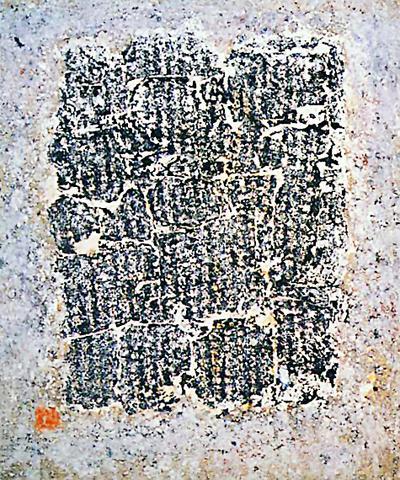
Chann started working in an abstract expressionist vein in the 1950s, when the school had become the mainstream of American modern art.
Although Chann once admitted in an interview to his admiration for abstract expressionist pioneers such as Mark Tobey and Jackson Pollock, he also realized that he had to explore different subjects and material if he was to develop his own style.
Chann did not have to look that far for inspiration, since his own art gallery -- not simply a display room for his own works, but a jewelry and Chinese artifacts shop -- had ample supply of calligraphy prints and rubbings taken from oracle bones, bronze vessels and steles.
According to art critic Wang Chia-chi's (
In many works, Chann made collages using these rearranged scripts on canvas. It was on these collages that the painter applied oil colors or, in some cases, wrote more calligraphy.
As if to create historical relics, Chann integrated fine sands on the painted surface to subtly imitate the time-worn veneer of artifacts.
These procedures resulted in some enchanting aspects to Chann's works.
While viewing an entire painting is enchanting, a closer look at the delicate traces of paint and the half-hidden elusive scripts, is as delightful as perusing a finely incised and naturally corroded Shang vessel. And in fact, the kind of azurite often found in the patina of Shang bronze is often an underlying color in Chann's paintings.
At the age of 12, Chann emigrated with his father from China's Guangdong province to California and was enrolled at the Otis Art Institute in Los Angles eight years later in 1934.
With a solid training in Impressionist techniques, Chann was an enthusiastic painter of the poverty of the blacks, Chinese and Mexicans, especially of the aged and orphaned among them.
Before Chann set up his art shop, he had good connections with several Los Angles dealers, and these works of social realism were frequently exhibited in his early years.
A less well-known line of painting Chann worked on involved scenes from the Bible. A Christian all his life, he donated 250 works to the Crystal Cathedral, near Los Angles, where they are now on permanent display.
George Chann Solo Exhibition runs until May 28 at Lin and Keng Gellery, No. 11, Lane 252, Tunhua S Rd., Sec 1 (
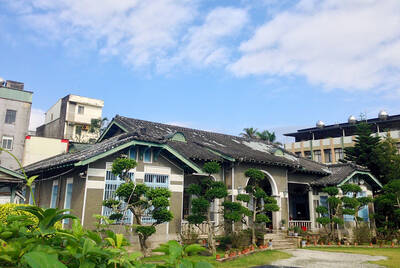
When life gives you trees, make paper. That was one of the first thoughts to cross my mind as I explored what’s now called Chung Hsing Cultural and Creative Park (中興文化創意園區, CHCCP) in Yilan County’s Wujie Township (五結). Northeast Taiwan boasts an abundance of forest resources. Yilan County is home to both Taipingshan National Forest Recreation Area (太平山國家森林遊樂區) — by far the largest reserve of its kind in the country — and Makauy Ecological Park (馬告生態園區, see “Towering trees and a tranquil lake” in the May 13, 2022 edition of this newspaper). So it was inevitable that industrial-scale paper making would

Asked to define sex, most people will say it means penetration and anything else is just “foreplay,” says Kate Moyle, a psychosexual and relationship therapist, and author of The Science of Sex. “This pedestals intercourse as ‘real sex’ and other sexual acts as something done before penetration rather than as deserving credit in their own right,” she says. Lesbian, bisexual and gay people tend to have a broader definition. Sex education historically revolved around reproduction (therefore penetration), which is just one of hundreds of reasons people have sex. If you think of penetration as the sex you “should” be having, you might
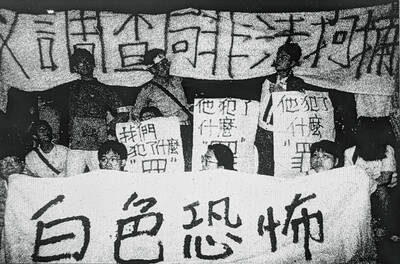
July 21 to July 27 If the “Taiwan Independence Association” (TIA) incident had happened four years earlier, it probably wouldn’t have caused much of an uproar. But the arrest of four young suspected independence activists in the early hours of May 9, 1991, sparked outrage, with many denouncing it as a return to the White Terror — a time when anyone could be detained for suspected seditious activity. Not only had martial law been lifted in 1987, just days earlier on May 1, the government had abolished the Temporary Provisions Effective During the Period of National Mobilization for Suppression of the Communist
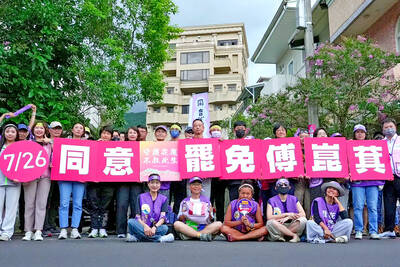
Hualien lawmaker Fu Kun-chi (傅?萁) is the prime target of the recall campaigns. They want to bring him and everything he represents crashing down. This is an existential test for Fu and a critical symbolic test for the campaigners. It is also a crucial test for both the Chinese Nationalist Party (KMT) and a personal one for party Chairman Eric Chu (朱立倫). Why is Fu such a lightning rod? LOCAL LORD At the dawn of the 2020s, Fu, running as an independent candidate, beat incumbent Democratic Progressive Party (DPP) lawmaker Hsiao Bi-khim (蕭美琴) and a KMT candidate to return to the legislature representing